Venous blood is present in any organism, complementing arterial blood circulatory system. Having already given up nutrients and oxygen, venous blood flows through the veins, returning to the lungs and heart.
In a healthy body, it does not stay in organs and blood vessels and returns to the lungs for oxygenation. Finding such "empty" blood in the vessels for a long time causes a disturbance in certain tissues and organs and affects the state of health, the treatment of which in this case requires a systematic approach.
Record content:
- 1 Characteristics, properties
- 2 Compound
- 3 Functions and properties
-
4 Anatomy and structure
- 4.1 Plasma
- 4.2 Inorganic substances
- 4.3 Organic matter
- 4.4 Corpuscular elements of blood
-
5 Stagnation
- 5.1 Symptoms and Signs
- 5.2 Causes
- 5.3 Treatment methods
-
5.4 Traditional methods
- 5.4.1 Melilot decoction
- 5.4.2 Nettle juice
- 5.4.3 Grape juice
-
6 If dark
- 6.1 Symptoms and Signs
- 6.2 Causes
-
6.3 Treatment methods
- 6.3.1 Mielosan
- 6.3.2 Aspirin
- 6.3.3 Curantil
- 6.3.4 Herbal teas
- 6.3.5 Meadowsweet
- 6.3.6 Celery and apple
- 7 Venous Blood Videos
Characteristics, properties
Venous blood flows through the vessels leaving the organs, as well as the pulmonary arteries and the right side of the heart. Venous blood does not contain nutrients and oxygen, with which tissues are saturated.
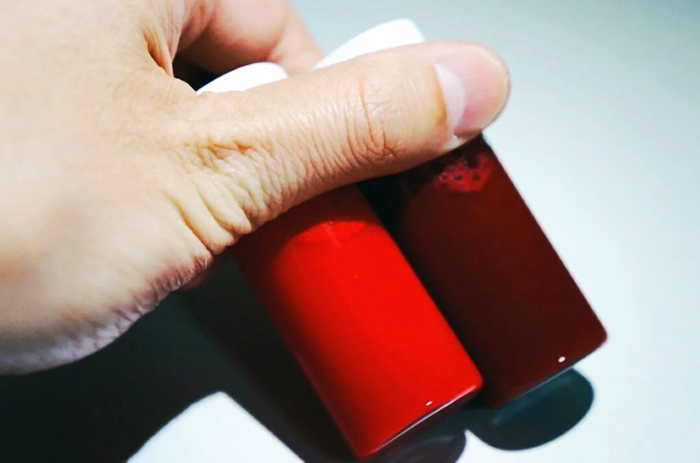
On the contrary, it contains harmful substances, which include:
- carbon dioxide;
- cellular metabolic products;
- hormones;
- microbes;
- toxins.
The rest of the blood composition does not change. Getting into the alveoli of the lungs, dark and thick venous blood is again saturated and becomes arterial.
In a healthy person, venous blood is completely separated from arterial blood. However, in rare cases, due to incomplete separation of blood, its mixing with arterial blood can be observed. For example, with heart defects, varicose veins, lung diseases.
The appearance of venous blood is very different from arterial blood. The blood in the veins is noticeably darker and thickeras it loses oxygen and nutrients. Such blood, due to its thick consistency, is much easier to stop.
Venous blood clots faster and allows you to determine the state of the body better than capillary blood, due to the large amount of toxins, microbes and hormones in it.
Venous blood has a higher pressure and temperaturethan in arterial blood. This blood flows more slowly through the veins.
| Indicator type | Arterial | Venous |
| pressure | big | small |
| direction of blood flow | to the authorities | from organs |
| appointment | food | removal of exchange products |
| nutrients | in great numbers | absent |
| NS | elevated | small |
| blood movement | high | slow |
| amount of oxygen | high | low |
| amount of carbon dioxide | small | big |
| Colour | bright red | dark |
| density | small | big |
| temperature | reduced | increased |
Compound
Venous blood flows from organs and has a different speed and pressure, but the chemical composition and physical properties of blood do not differ significantly from arterial blood.
The composition of venous blood includes:
- plasma;
- shaped elements;
- inorganic and organic substances;
- carbon dioxide;
- hormones, bacteria and viruses.
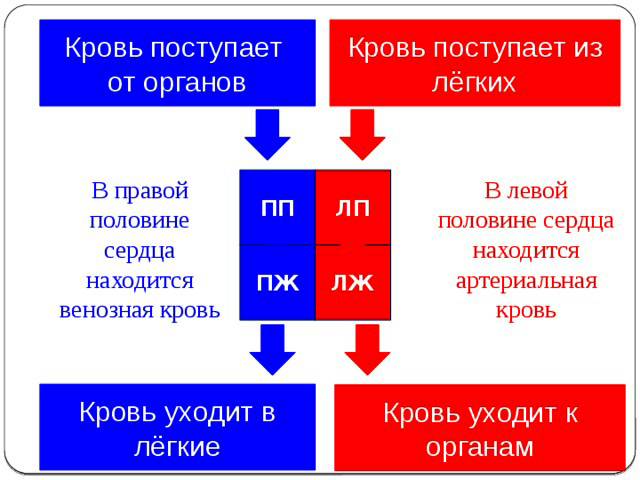
Each of the parts of the venous blood performs its own function and has its own effect on the state of the human body.
Functions and properties
Venous blood flows through the veins more slowly, but this does not change the number of its functions.
Venous blood is required for:
- removing carbon dioxide and metabolic products from the body;
- transfer of nutrients from the intestine to liver cells through the portal vein;
- cleansing the body of excess hormones, salts to maintain balance;
- transferring carbon dioxide to the lungs in order to remove it from the body;
- participation in the regulation of body temperature;
- assisting individual organs in the transfer of signaling substances;
- participation in maintaining general homeostasis in the body.
Venous blood necessarily contains sugar. The norm of glucose in venous blood in a healthy person is 3.5-6.1 mmol / l. In capillary blood, this value should be significantly lower, since venous blood removes excess sugar from the body.
Anatomy and structure
Venous blood flows through the veins, but, like arterial blood, it consists of plasma and corpuscles. Its composition is supplemented by inorganic, organic and additional substances.
Plasma
The amount of plasma in the venous blood reaches 60% of the total composition. Blood plasma is the liquid part of blood, which includes water (up to 90% of the total), proteins and suspended compounds. It is considered the intercellular substance of the connective tissue of the blood.

Globulins, albumin and fibrinogen are presented as proteins in plasma.
Inorganic substances
The blood contains inorganic substances - cations and anions, about 2% of the total mass.
Organic matter
And the organic part of the plasma is subdivided into:
- no nitrogenous (cholesterol, lactate, pyruvate);
- particles containing nitrogen (amino acids, urea, creatinine);
In addition, the venous blood plasma contains carbon dioxide, as well as hormones, enzymes, viruses and bacteria in large quantities.
Corpuscular elements of blood
Corpuscular elements of blood make up about 40% of its amount and include:
- Red blood cells are abundant in the blood. These red blood elements do not have a nucleus and have the shape of disks concave on 2 sides. It is in the erythrocytes that hemoglobin is contained, which has the ability to transport carbon dioxide through the venous blood.
- Platelets or particles of the cytoplasm of large cells in the bone marrow, which have a membrane, act in conjunction with other elements. So with blood proteins, they are responsible for blood clotting in places of damage during bleeding.
- Leukocytes constitute the body's immune defense. Leukocytes have the ability to move outside the blood vessel. Their main function is to protect against the effects of foreign compounds. Leukocytes are able to secrete cells to detect viruses and secrete antibodies.
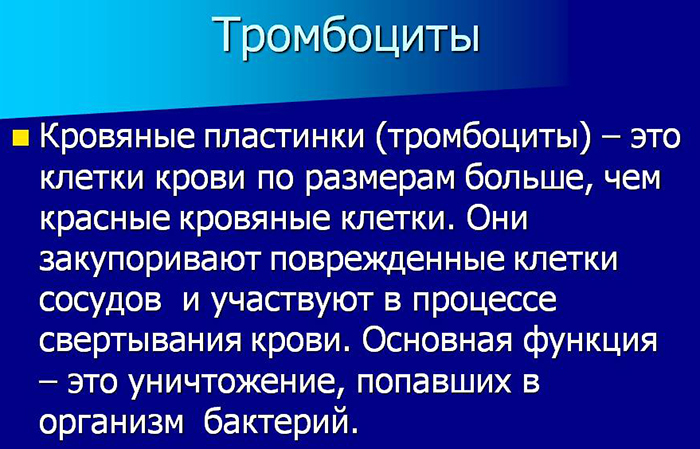
Leukocytes in the blood are of different types and are subdivided into:
- segmented, which are most in the blood;
- lymphocytes, which make up 30% in venous blood;
- monocytes (7%);
- stab are present in an amount of 3%;
- eosinophils in the blood are 2%;
- basophils in a healthy person are present in an amount of 1%;
- metamyelocytes should be no more than 1%.
The venous blood contains a small amount of glucose, which determines the state of the body. Glucose is present in the body at all times.
Blood is constantly renewed in the body and the main organ of hematopoiesis is the bone marrow. All venous blood flowing from the organs necessarily passes through the spleen for purification, and then returns to the lungs, turning into arterial blood and renewing the circle.
Stagnation
Finding venous blood in the vessels and organs for a long time is called stagnation. This condition can be of varying degrees. Venous blood can accumulate near the walls of blood vessels and in organs in a small amount or almost completely displace a separate section of the circulatory system.

During stagnation, nutrients and oxygen cease to flow into individual vessels and organs. Cyanosis of the skin and painful sensations when pressing on certain areas of the skin may gradually appear. Stagnation of venous blood provokes inflammatory and purulent processes in certain parts of the body and can cause inflammatory processes in the organs.
Symptoms and Signs
Stagnation of venous blood does not manifest itself as symptoms immediately.
The following signs develop gradually:
- headache, especially in the morning;
- pain when pressing and moving in certain parts of the body;
- the appearance of cyanotic integument;
- the appearance of slight congestion in the ears;
- development of nervous diseases.
Causes
Venous blood has the ability to carry viruses, bacteria, cellular metabolic products for their removal from the body and always flows from the organ.

Due to this feature, stagnation of venous blood can lead to the development of serious disorders in the body, the causes of which can be:
- Injury from blows and bruises. Hemorrhages and stagnation of venous blood appear not only after injury, but also as a result of improper fusion of vessels, in which venous blood can stagnate.
- Blood clots or complete or partial overlap of the walls of blood vessels by blood clots disrupt the normal flow of venous blood, the pressure of which, so, is not high. As a result, venous stasis of blood occurs in the area with a thrombus.
- Sedentary lifestyle, in which, as a result of long sitting, the pressure in the pelvis increases. Increased pressure in the lower abdomen in the presence of thick blood causes venous congestion and serious health problems (hemorrhoids, varicose veins).
- Pinching certain parts of the body when wearing narrow shoes, tight clothes) noticeably narrows blood vessels in compressed parts of the body. The circulation in these areas is disrupted and stagnation appears.
- Neoplasms of any nature (malignant and benign) cause circulatory disorders with large overgrowth. As a result of tissue compression, the blood circulation process is disrupted and venous stasis occurs in certain areas of the vessels.
- Phlebeurysm changes the course of the vessel, creating irregularities and depressions. In such places near the walls, there may be a slight stagnation of venous blood, which also provokes pain and discomfort.
- Cerebral congestion develops due to violations of the blood vessels inside the brain. The damaged tissues become swollen and inflamed, and oxygen starvation and congestion form inside the head.
- Stasis of the lungs or lower extremities, as a result of which there is edema and a noticeable increase in the size of the lungs and tissues of the vessels of the lower extremities. Blood circulation is impaired, and venous blood stagnates in the tissues.
- Hyperemia of the kidneys or their significant compaction and increase provokes spasm and low blood flow to the organ.
Treatment methods
Venous blood can stagnate in different parts of the body and organs of a person, therefore stagnation is treated with a variety of methods, which include:
- revision of the dietary system and the use of dietary products, cessation of tobacco and alcohol;
- physical exercise in the form of sports walking, combined with a contrast shower, helps to restore blood circulation;
- surgical intervention, which involves the removal of the damaged area, growth and restoration of the normal functioning of blood vessels;
- drug therapy includes:
- topical ointments and gels that help restore blood microcirculation and promote vascular restoration. These include heparin ointment, troxerutin gel, venen gel. Ointments and gels are applied to the damaged area of the body 2-3 times a day with massaging movements for 5-7 days;
- taking drugs that help restore the state of blood vessels and blood microcirculation. Such drugs relieve the symptoms of heart failure and help remove the symptoms of varicose veins. Curantil relieves stagnation of venous blood by restoring the process of blood supply in damaged tissues. The drug is taken 1 tab. 3 times a day before meals for 30-60 days;
- taking diuretics helps to accelerate blood supply and remove all harmful substances from the body along with the liquid. Furasemide also helps to remove sodium and lower blood pressure. It is taken with stagnation, 1 tab. 2-3 times a day for 7 days.
- taking anti-thrombotic drugs (warfarin, Plavix), which help to cleanse blood vessels and restore blood circulation. Plavix take 1 caps. 2 times a day for 7-10 days.
- taking spasmolytics allows you to relieve spasm of cerebral vessels and restore blood flow and remove congestion in the vessels of the head (no-shpa, drotaverin, kordaferon). No-shpu with stagnation take 1-2 tab. 2 times a day for 2 weeks.
Traditional methods
Venous blood passes through the vessels of the circulatory system, therefore, traditional methods are often used to treat stagnation, which have an effect on the circulatory system and the state of the vascular walls.
Folk remedies are used only after consultation with a specialist and in conjunction with other methods of treatment. As folk remedies are used:
Melilot decoction
The decoction on the melilot leaves helps to restore blood supply. It promotes the restoration of blood vessels and helps cleanse the blood from excess waste products of cellular metabolism.
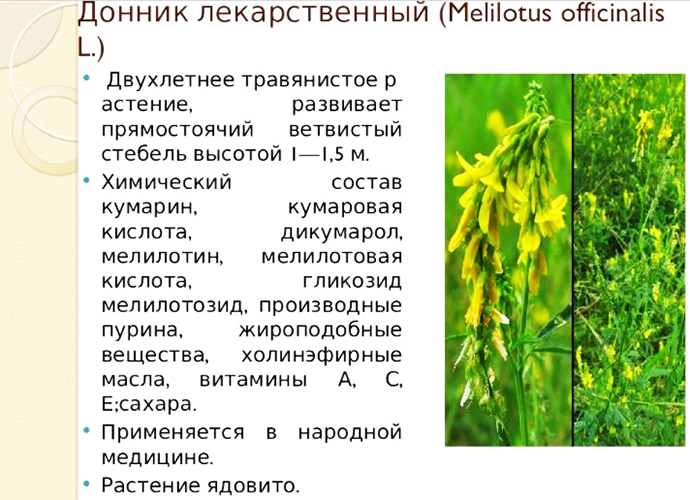
Cooking steps:
- For the preparation of the broth 2 tbsp. l. dry leaves of sweet clover are combined with 1 tbsp. hot water. Then the mixture is boiled in a water bath for 20 minutes and filtered through a sieve.
- The ready-made broth is recommended to be taken in 100 ml. in the morning and evening on an empty stomach.
Nettle juice
Nettle juice helps restore vascular health, improves blood circulation and has anti-inflammatory properties.
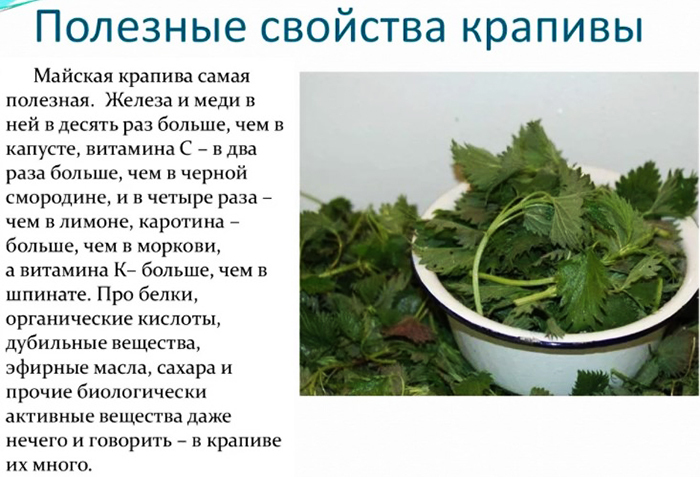
Cooking steps:
- Nettle leaves and stalks are passed through a juicer or crushed in a blender and filtered.
- Fresh nettle juice is stored in the refrigerator and drunk in 100 ml. 3-4 times a day.
Grape juice
Fresh grape juice has the ability to strengthen the walls of blood vessels. It cleans the walls of blood vessels and has diuretic properties.
Freshly squeezed grape juice is drunk in 1 tbsp. 3 times a day for 20-30 days.
If dark
Venous blood itself is dark in color. This is due to the fact that it flows from the organs, being saturated with a large amount of carbon dioxide and giving off oxygen. A rich dark red hue of venous blood is considered normal. However, if the blood is almost black, this indicates a serious disorder in the body that needs to be treated.
Symptoms and Signs
With dark venous blood, a person can not only see a non-standard blood color, but also identify violations for a number of symptoms, which include:
- tingling in the legs and arms;
- excessive nervousness and anxiety;
- constant yawning and desire to sleep;
- with any damage to the skin, blood flows slowly;
- shortness of breath and palpitations;
- tinnitus, which is sometimes accompanied by impaired vision or hearing;
Causes
Dark and thick venous blood is caused by the large amount of red blood cells it contains. An indicator of this is hemoglobin. Normally, in men, the hemoglobin level should be at 115, and in women, 125 g / l.

Increased production of red blood cells is associated with disorders in the body, which can be associated with:
- a drop in immunity;
- sexually transmitted diseases;
- dehydration;
- pregnancy and difficult childbirth;
- stress;
- great physical exertion;
- oncological diseases;
- a sharp change in climate and diet.
The increased production of red blood cells is called erythremia.
Treatment methods
Too dark and thick blood causes serious changes in the body over time, therefore, the treatment of such a deviation must be approached carefully.
Full recovery often requires:
- revise the food system, drink at least 2 liters every day. water;
- eliminate stressful situations;
- undergo examination and treatment of oncological diseases. And if indicated, special treatment or surgical removal of the neoplasm;
- undergo drug therapy, which includes the use of drugs such as:
Mielosan
Mielosan is a drug that helps to normalize the production of red blood cells.
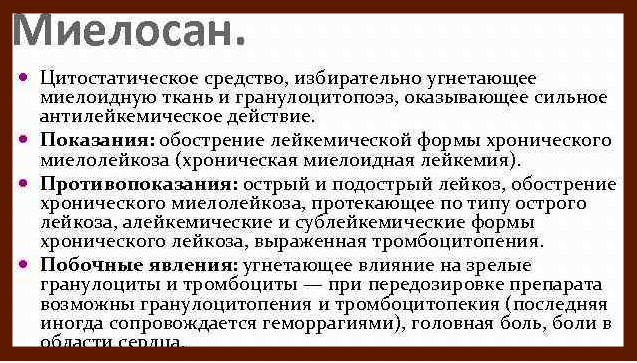
Promotes blood thinning and restores its composition. The drug is prescribed to receive 125-200 mg per day for 30-40 days.
Aspirin
Aspirin is used to improve blood flow. The drug prevents blood clots from platelets from forming inside the stream. Take it 200-300 mg 2-3 times a day for 2-3 weeks.
Curantil
Curantil improves the condition of blood vessels and helps restore blood supply. They take the medicine 75 mg 4-5 times a day for 1-2 months.
Herbal teas
To thin the blood, teas infused with medicinal herbs are actively used:
- Chamomile, lemon balm or thyme in the amount of 3 tbsp. l. pour 400 ml of boiling water.
- The infusion is left for half an hour.
- Then the composition is filtered and 200 ml is drunk 3-4 times a day instead of tea. The product can be diluted with water or softened with honey.
Meadowsweet
The meadowsweet grass helps to increase the fluidity of the blood.
It improves cerebral circulation and restores blood pressure:
- 1 hour l. herbs must be poured with 1 tbsp. boiling water.
- The composition is insisted under a lid for 20-30 minutes.
- Then the broth is drunk at ½ tbsp. 3 times a day for 1 month.
Celery and apple
Fresh celery and apple have a unique composition that purifies the blood and restores its consistency and structure:
- For preparation of means 300 gr. celery should be finely chopped or grated.
- Add 2-3 peeled apples to the mixture, which are also crushed on a fine grater.
- Then put 2 finely chopped garlic cloves and 2 tbsp. l. parsley.
- The mixture is flavored with ½ part lemon and watered with 2-3 tbsp. l. olive oil. The salad should be eaten immediately after preparation and then at intervals of 3 days for 1 month.

Venous blood performs an important function in our body and flows through the veins of the circulatory system, removing all harmful substances. Any disturbance in blood flow can create stagnation or affect the quality of venous blood in the shortest terms, therefore, the disease should be treated immediately after the first symptoms or adverse analyzes.
It is not recommended to self-medicate with the development of such disorders, because only a specialist is able to diagnose, prescribe competent treatment in accordance with the state of health and trace the dynamics of improvement for a complete recovery of work organism.
Venous Blood Videos
Diseases of the venous system:


